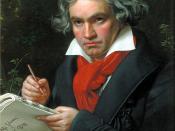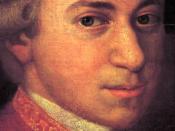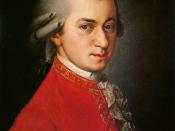In the late 1700's and early 1800's the Baroque period gave way to the classical era, introducing many revolutionary new scientific discoveries and theories. This drastically changed people's social views and transformed into the age of enlightenment. With this change in social philosophy came changes in musical trends. Previous Baroque style developed in to a new Classical, formed by a sensitive and profuse with ornamentation French rococo style, vocal and instrumental Italian gallant style, and northern German expressive Emfindsamer style. This new style concerned for a musical form with a greater prominence on clarity, with more concrete melodic _expression, and clarity of instrumental color.
There is no such a date when the changes in music started, but there is an onset of the great transitional composer Carl Philipp Emanuel Bach who emerged of the Galant style. He was among the leading composers who took the sonata principle and brought it to the concerto.
CPE Bach followed his first predecessors Gallupi and San Martini (they first replaced the concerto grosso form with the sinfonia) and created 5 sets of keyboard sonatas featured with the expressiveness that he transferred to the keyboard music from the lyrical vocal style. Sonatas and all orchestral works written in this new leading form were mainly influenced by sinfonia, the Italian opera overture, which featured three-part structure with the rhythm of minuet at the end. Most of his sonatas contain three movements with an emphasized expressiveness in details. Despite that some of his sonatas were yet written in Baroque binary form, CPE Bach introduced a definite development of two themes and their recapitulations.
After the success of CPE Bach compositions, uncountable number of new ideas and nuances appeared in the classical composition. The eminent centers of the early classical era were Mannheim and Vienna. Jahann Stamitz, the...


